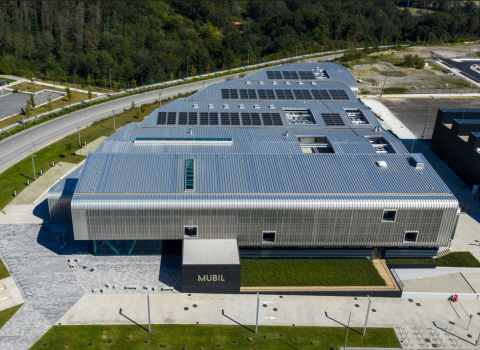The UN Climate Panel wants us to stop using fossil fuels. Hydrogen is an alternative – but not without overcoming some obstacles first.
“Hydrogen is a strong candidate to replace fossil fuels in transport and industry,” says Paolo Pisciella, a researcher at the NTNU Energy Transition Initiative, in the Department of Industrial Economics and Technology Management (IØT).
Every year during a week in August, the Arendal Week festival addresses the big questions of today and tomorrow. This year’s programme includes researchers from SINTEF and NTNU who are highlighting hydrogen as an alternative to fossil fuels. Hydrogen production could also provide thousands of jobs in Norway.
You might also like: Rapid action can help prevent the worst consequences of global warming
Hydrogen best suited for transport
“Studies show that around 80 per cent of the expected future production of hydrogen will be used for transport, while the remaining 20 percent will be used by industry,” says Pisciella.
He draws particular attention to ocean transport over longer distances as an application that can’t make use of energy from batteries. Hydrogen or biofuels are the most likely alternatives for long-distance transport.
“Making this shift will help reduce greenhouse gases,” says Pisciella.
Obstacles to Norway’s advantage
Norway is particularly well-equipped to tackle one major obstacle. Hydrogen is still largely produced by breaking down natural gas, and this process is not exactly an environmentally friendly solution.
“Norway will be particularly competitive due to its large supply of renewable energy.”
“Today, hydrogen is mostly produced by steam reforming, a chemical process to break down hydrocarbons, especially natural gas,” Pisciella says.
Norway is particularly competitively poised due to its large supply of renewable energy and the planned expansion of wind power.
“This means that we can produce hydrogen both from electrolysis based on electricity and from steam reforming by using natural gas, but also implement carbon capture and storage. In both cases, one of the prerequisites for large-scale production is to have the capacity to produce even more energy in the future,” says Pisciella.
The researcher believes it is important to recognize that there is great resistance to expanding wind power on land, and also to carbon capture and storage.
Need to prepare
“The ready availability of both natural gas and energy puts Norway in a very important position as an exporter of hydrogen to the rest of Europe. But it is important to be technically prepared before this can happen,” says Pisciella.
First, carbon capture and storage have to be as energy efficient as possible. As larger amounts of hydrogen are exported, the need for capture and storage of CO2 also increases. Carbon capture and storage, plus increased production using electrolysis, could sharply increase the need for more energy. This could in turn increase the price of energy, which would negatively affect parts of the industry, especially the most energy-intensive part.
Pisciella is currently working on an article called “Economic analysis of a transition towards a zero emission maritime sector based on hydrogen. Do we need an incentive mechanism?” which expands on some of the aspects of the transition to hydrogen.
This article was first published on August 31 by NTNU.





 A unique international forum for public research organisations and companies to connect their external engagement with strategic interests around their R&D system.
A unique international forum for public research organisations and companies to connect their external engagement with strategic interests around their R&D system.